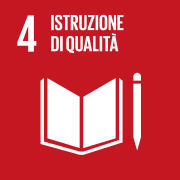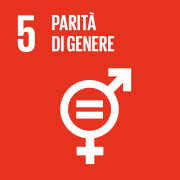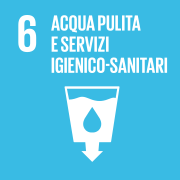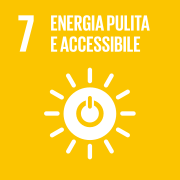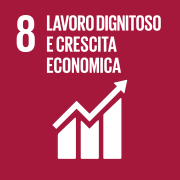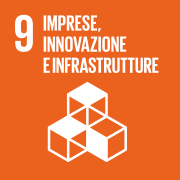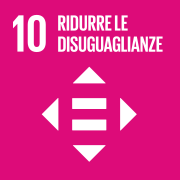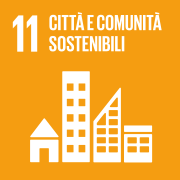
Transport emissions continue to rise: more private cars, more goods on the road. The solutions to decarbonise transport are there, but the real challenge is to completely rethink the way we move around our cities. Using digital technology as a tool to enable more sustainable mobility. This is why, once again this year, the Foundation for Digital Sustainability has produced its Sustainable Mobility Report: the annual research highlighting the crucial role of digital technologies in the transformation of mobility in Italy, presented on Thursday 16 January during a dedicated webinar.
‘Sustainable mobility is not only a technological challenge, but a real cultural transformation,’ explained Stefano Epifani, President of the Foundation for Digital Sustainability.
“Digital mobility is a crucial resource for achieving the goals of the Paris Agreement and improving the quality of life in our cities and towns. However, our report highlights how, even today, the infrastructure gap still penalises small urban centres to the advantage of large metropolitan cities. A joint effort is needed to break down the digital divide and ensure uniform access to all technological solutions, so that every citizen can benefit from the opportunities offered by modern, sustainable and efficient mobility‘.
“We live in a historical moment in which sustainability and technological innovation are two fundamental pillars for social and economic development,” said Alberto Tosti, General Manager of Sara Assicurazioni, in his opening keynote speech. “Digitalisation, in particular, is not only a tool for improving efficiency, but a true accelerator of both cultural and behavioural change. Today, mobility has become one of the most visible areas of ecological transition: climate change and urban pollution are pushing us to rethink the way we move. In this context, technology is emerging as an indispensable resource‘.
One year on: what has changed for sustainable (and digital) mobility in Italy?
In recent years, the perception of the importance of digital for urban mobility has shown some significant changes. In 2023, 81% of respondents considered digital technologies indispensable for improving urban transport. One year later, this percentage is slightly decreasing, standing at 75% in large centres and 71% in small municipalities. This slight decrease reflects an increasing focus on infrastructural limitations, which affect the ability to fully exploit the potential of technologies.
The gap between North and South, as well as between large cities and small municipalities, continues to grow, as do the cultural differences between digitised and non-digitalised users. In 2023, 73 per cent of digital non-users who were not aware of sustainability believed that artificial intelligence could be useful for mobility, compared to 89 per cent of digitised and environmentally aware citizens. In 2024, this gap grew further with even less use of technology among the less digitised, underlining the need for specific interventions to close the cultural and technological gap.
Although awareness of the importance of digital remains high, some sectors, such as e-mobility, show stagnation in terms of adoption. In 2023 and 2024, only 6 per cent of users, for example, regularly use apps dedicated to locating charging stations. To address these challenges, it is crucial that institutions strengthen infrastructure, promote awareness campaigns and incentivise the use of smart technologies, making them more accessible to all. “A particularly interesting theme among those that emerged from the study is the difference between large and small centres,” commented Orlando Di Pippo, Chief Revenue Officer of Mashfrog. “It is clear that in the small centres sustainable mobility will arrive slightly later, but I believe that today we should think in terms of a mobility that, through different solutions, allows us to connect these different realities of the territory. If we could implement an integrated mobility, including trains, buses, rather than other means of transport, that could bring people from small to large centres, I am convinced that even in the smallest towns this transformation would be faster“.
From railways to skies: the key to Digital Sustainability
An important feature of the webinar was the presence of representatives from some of the leading national companies involved in different transport systems, with whom not only the impact of the different solutions was discussed, but also the potential of technologies in making the entire system more efficient. “Looking at transport, to date it is difficult to find a less impactful means of transport than the train,” explained Massimiliano Garri, Chief Technology, Innovation & Digital Officer at Ferrovie dello Stato. “At Ferrovie dello Stato, the issue of sustainability is particularly central: to give you an example, our trains, particularly the high-speed ones, are now 97-98% recycled at the end of their lifecycle, which is very important. The one I work in is a complex structure, but one in which there is a great deal of focus on sustainability, which is seen not as a point of arrival, but as a starting point‘.
From the point of view of environmental impact, however, air transport is much more important today. But there are already several solutions, as highlighted by Angelo Caporizzo, Head of Digital & Green IT at Aeroporti di Roma, that, through digital technology, enable the sustainability of this absolutely central sector to be improved. “Air transport accounts for two per cent of global energy-relatedCO2 emissions. However, it is crucial to remember that this sector is crucial in connecting people, cultures and economies globally, representing in fact a driver of development. In such a strategic context, technology can lead, for example, to the optimisation of energy-intensive airport operations. One example on all, in this direction, is that of Airport Collaborative Decision Making: an operational framework used at European level that allows all stakeholders in the ecosystem to exchange information in real time, useful for reducing taxiing minutes, optimising routes according to wind and distance, and reducing fuel and inducedCO2‘.
The electric doubt
The research also shows that 75 per cent of respondents in large urban centres consider digital technologies indispensable for improving mobility, and this figure is in line with that recorded in small centres (71 per cent): however, resistance to the adoption of advanced digital tools remains.
Despite widespread awareness, the actual use of sustainable mobility apps remains limited. For example, only 19% of inhabitants in large centres use carpooling apps at least occasionally, compared to 11% in small centres; carsharing and bikesharing are adopted by 24% of citizens living in large centres, but by only 13% of the population living in small centres.
Furthermore, as mentioned, e-mobility support apps such as those for locating charging stations are still little used – only 2% of respondents in small towns say they use them regularly. However, awareness of the environmental impact of hybrid and electric cars is growing: 65 per cent in large towns and 56 per cent in small towns ‘somewhat’ or ‘very much’ agree that these technologies can cut costs and reduce pollution. High percentages, of course, but they also show that there is still a significant degree of scepticism about electric mobility. “I believe that these figures reflect a still somewhat partial and multifaceted understanding of the real impact of electrification on the world of mobility,” commented Francesco Castanò, Deputy General Manager of Aci Informatica. “What I notice, in particular, is a widespread concern that the logic that is driving this market is more driven by the economic interests of power groups than by real assessments based on sustainability models. There is thus little clarity perceived by citizens, and it is this that generates confusion and polarisation of positions. What should be done, therefore, is to increase knowledge on these issues through the promotion of information campaigns based on scientific data, and to make the underlying economic processes public and transparent‘.
Towards widespread digital literacy
The survey confirms that the most digitised and sustainability-conscious Italians – the Digital Sustainables – are also the main users of digital mobility tools. In large centres, 64% of them regularly use satellite navigation apps, while in small centres this percentage drops to 42%.
However, the adoption of digital technologies is not exclusive to the most digital and sustainable: even those who do not use digital but are sustainability-conscious, the Sustainable Analogue, show an increasing propensity towards digital solutions, albeit to a more limited extent. Conversely, the groups of citizens who are not in any way sustainability-conscious, digitalised or not, show greater resistance. Targeted public policies must be activated towards these citizens, aimed at increasing the degree of awareness of this part of the population towards digital, while accompanying them towards a correct and responsible use of the new tools. “The research data show the importance of moving towards a high level of literacy among the population, and the differences that have emerged from the point of view of digital awareness even between large and small towns can help us to better target the messages we want to spread,” stressed Luigi Vassallo, CTO of Sara Assicurazioni. “As Sara Assicurazioni, we have invested a lot in activities that can be useful in this direction: we have, for example, created apps that give our customers useful information on improving their driving style on the one hand, and information on how much they are polluting on the other. We have to get more and more used to these concepts, and gamification is an important tool for user involvement‘.
Among the topics debated during the afternoon, of great importance was also that of the ageing population, which is becoming increasingly relevant in Italy. A topic to be taken into account for the development of a truly sustainable mobility for all, leveraging digital technologies. “This is one of the challenges we are facing, all the more so with regard to the smallest centres, which are also the least served,” emphasised Giuseppe Borruso, Associate Professor of Economic and Political Geography at the University of Trieste. “In this context, technological and digital development is very promising, especially in terms of making operational and feasible a series of solutions that in the past were only hypothesised. It can promote a series of services such as, for example, demand-responsive transport systems, which make it possible not to make buses run empty, but to link them to the construction of a demand, gathered precisely thanks to technology-based systems. The ageing population is therefore one of the most challenging aspects in this field, but also one with important prospects‘.



